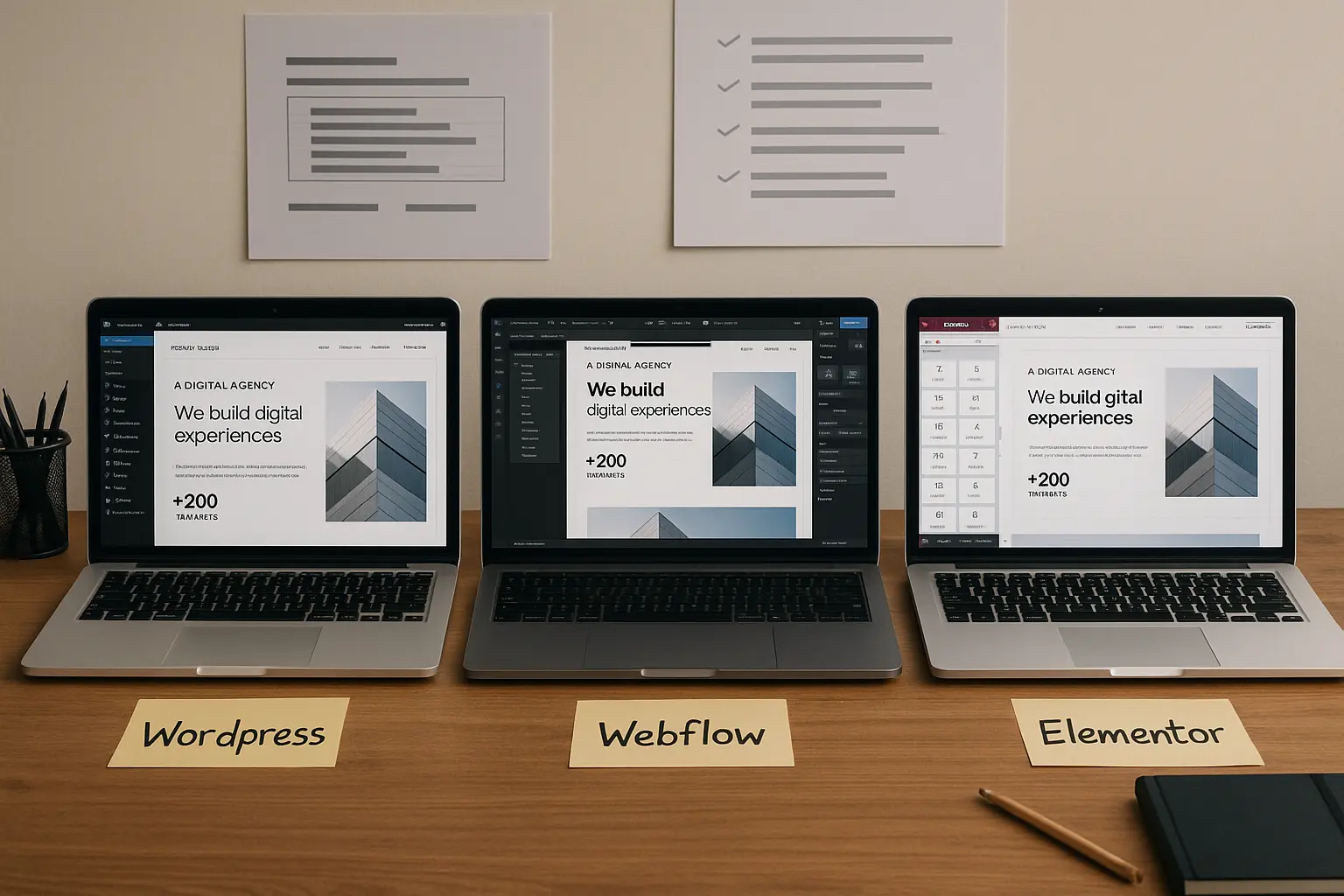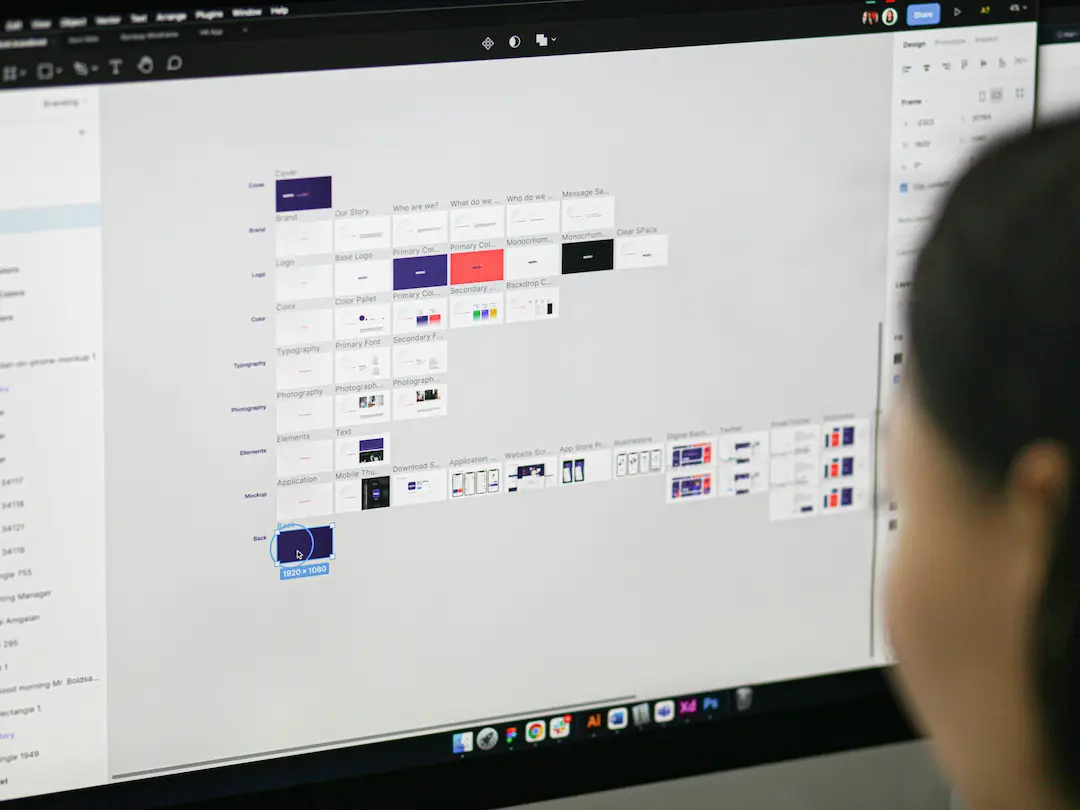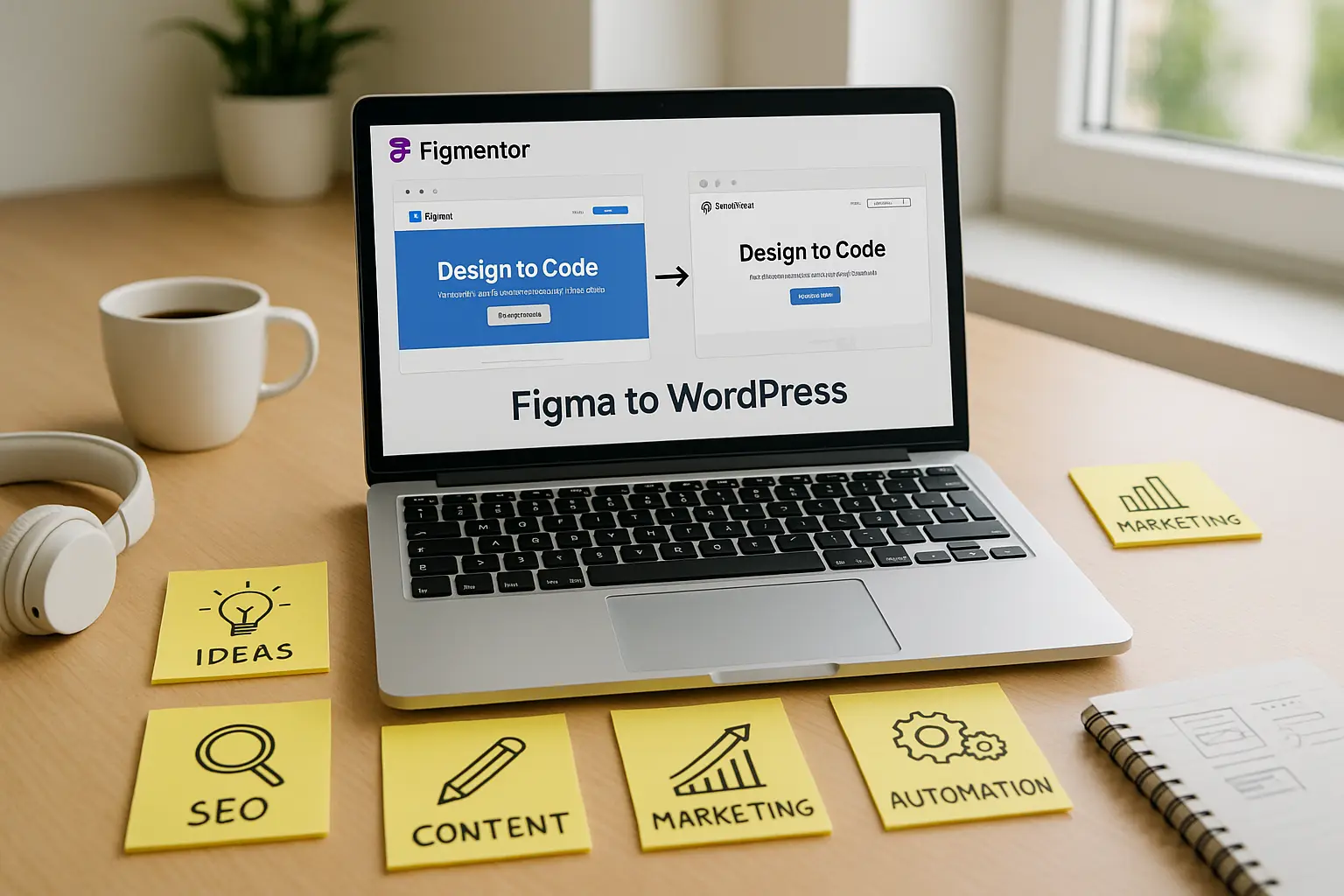Introduction
As a Figma designer, choosing the right platform to bring your designs to life is crucial. Should you stick with WordPress, opt for the modern Webflow, or leverage the drag-and-drop power of Elementor?
Each platform has strengths and weaknesses, depending on your workflow, technical expertise, and business goals. This guide breaks down the key differences to help you decide which tool-WordPress vs Webflow vs Elementor-is the best fit for your needs.
1. Understanding the Core Differences
Before diving into comparisons, let’s clarify what each platform offers:
WordPress
- Open-source CMS with full customization via PHP, plugins, and themes.
- Best for: Developers, agencies, and businesses needing scalability and SEO control.
- Key Strengths: Extensive plugin ecosystem, strong SEO capabilities, and full ownership of your site.
Webflow
- Visual web design tool with built-in CMS and hosting.
- Best for: Designers who want a no-code solution with clean, responsive designs.
- Key Strengths: Real-time design-to-code, built-in animations, and seamless Figma integration.
Elementor (WordPress Page Builder)
- Drag-and-drop page builder for WordPress.
- Best for: Designers who want WordPress flexibility without deep coding knowledge.
- Key Strengths: Intuitive UI, pre-built templates, and deep WordPress integration.
2. Key Comparison Factors for Figma Designers
A. Design Flexibility & Fidelity from Figma
| Platform | Design Accuracy | Customization | Responsive Design |
|---|---|---|---|
| WordPress | High (with custom themes) | Full control via code | Manual adjustments needed |
| Webflow | Excellent (pixel-perfect) | Visual editor with CSS/JS | Automatic & fine-tuned |
| Elementor | Good (template-based) | Drag-and-drop with some limitations | Responsive controls |
Winner: Webflow (best for maintaining Figma’s design precision).
B. Ease of Use & Learning Curve
- WordPress: Steeper learning curve (requires some coding knowledge).
- Webflow: Moderate (visual editor but complex interactions).
- Elementor: Easiest (drag-and-drop with minimal setup).
Winner: Elementor (best for quick, no-code implementation).
C. SEO & Performance Optimization
| Platform | SEO Control | Page Speed | Hosting Options |
|---|---|---|---|
| WordPress | Full control (plugins like Yoast) | Depends on hosting | Self-hosted or managed |
| Webflow | Good (built-in SEO tools) | Fast (optimized hosting) | Webflow hosting only |
| Elementor | Good (WordPress SEO plugins) | Can be slow if not optimized | Depends on WordPress host |
Winner: WordPress (best for advanced SEO and performance tuning).
D. Cost & Scalability
| Platform | Pricing Model | Scalability | Best For |
|---|---|---|---|
| WordPress | Free (self-hosted) + plugin costs | Highly scalable | Large websites, eCommerce |
| Webflow | Subscription-based | Limited by plan | Small to medium sites |
| Elementor | Free + Pro plans | Scales with WordPress | Small to medium sites |
Winner: WordPress (most cost-effective for long-term growth).
E. Integration with Figma Workflows
- WordPress: Requires plugins (e.g., Figma to WordPress converters).
- Webflow: Direct Figma-to-Webflow plugins (e.g., Figma to Webflow).
- Elementor: Limited direct Figma integration (manual adjustments needed).
Winner: Webflow (best native Figma integration).
3. Which Platform Should You Choose?
Choose WordPress If:
- You need full control over SEO and performance.
- You’re building a large, scalable website.
- You’re comfortable with some coding or have a developer.
Choose Webflow If:
- You want a pixel-perfect design-to-code workflow.
- You prefer a no-code solution with strong Figma integration.
- You’re designing small to medium sites with animations.
Choose Elementor If:
- You want WordPress flexibility without deep coding.
- You need quick, template-based designs.
- You’re working on landing pages or small business sites.
4. Best Workflow for Figma Designers
Option 1: Figma → Webflow (Best for No-Code Designers)
- Use Figma to Webflow plugins for seamless design transfer.
- Fine-tune interactions and animations in Webflow.
- Export clean, production-ready code.
Option 2: Figma → WordPress (Best for Developers & Agencies)
- Use Figma to WordPress converters (e.g., Figmentor).
- Customize with Elementor or custom themes.
- Optimize for speed and SEO with plugins.
Option 3: Figma → Elementor (Best for Quick WordPress Sites)
- Manually recreate designs in Elementor.
- Use pre-built templates for faster workflows.
- Optimize with WordPress SEO tools.
5. Final Verdict: Which Platform Wins?
| Use Case | Best Platform |
|---|---|
| No-code, design-first approach | Webflow |
| Full control, scalability, SEO | WordPress |
| Quick WordPress sites with drag-and-drop | Elementor |
For Figma designers who prioritize design fidelity and ease of use, Webflow is the best choice. For those needing long-term scalability and SEO control, WordPress wins. For quick, template-based WordPress sites, Elementor is ideal.
FAQs
1. Can I use Figma designs directly in WordPress?
Yes, but you’ll need a Figma to WordPress converter or manual implementation via Elementor/custom themes.
2. Is Webflow better than WordPress for SEO?
Webflow has good built-in SEO, but WordPress offers more control with plugins like Yoast and Rank Math.
3. Can I migrate from Webflow to WordPress later?
Yes, but it requires manual reconstruction or using migration tools.
4. Does Elementor work well with Figma?
Elementor doesn’t have direct Figma integration, so designs must be manually recreated.
5. Which platform is best for eCommerce?
WordPress (WooCommerce) is the most scalable and feature-rich for eCommerce.
Conclusion
The best platform depends on your needs:
- Webflow for designers who want a no-code, Figma-friendly solution.
- WordPress for developers and agencies needing scalability and SEO.
- Elementor for quick, drag-and-drop WordPress sites.
If you’re a Figma designer looking for the smoothest workflow, Webflow is the top choice. However, if SEO, scalability, and full control matter most, WordPress remains unbeatable.
Ready to streamline your Figma-to-web workflow? Try Figmentor for seamless WordPress integration!
Suggested articles
- Figma to WordPress: The Ultimate Guide for Designers and Developers
- How to Convert Figma to Elementor in Under 5 Minutes Without Coding
- Elementor for Figma Designers: Why This Combo Saves 100 Hours
- The Dark Side of Elementor’s Manual Workflow: 7 Shocking Reasons to Switch Now
- How to Build a WordPress Site Without Touching Code
- Top WordPress Design Plugins 2025
- Why Most Designers Hate WordPress and How to Fix It
- From Designer to Builder




